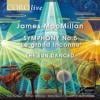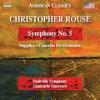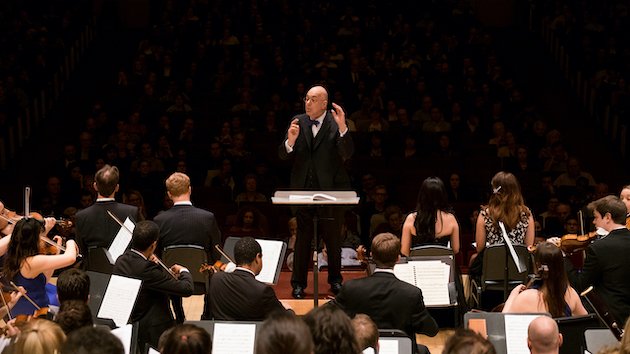
The protean conductor/educator/administrator Leon Botstein has long displayed a yen for resurrecting interesting pieces from the past that have been ignored for eons — and he does so again on a new Bridge release entitled Buried Alive. Now, one can take that title two ways — as the English translation for the largest-scale work on the disc, Othmar Schoeck’s Lebendig Begraben, or as the silence conveyed upon neglected works by posterity until Botstein came to the rescue. All three pieces here date from within two years of each other during a decade, the 1920s, when experimentation in music ran wild before Stalin, Hitler, and the Great Depression effectively put a damper on much of it.
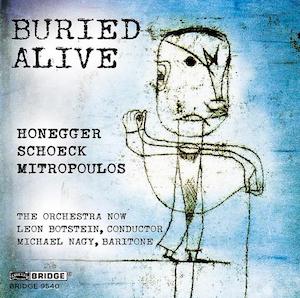 We could step back a little and exempt one of the pieces from oblivion since Arthur Honegger’s Rugby has received over a dozen recordings over the decades — including one led by the composer a year after completing it in 1928. It’s an energizing rough-and-tumble simulation of a rugby match with each team competing in a different time signature. Yet this performance with The Orchestra Now sounds stilted, lumbering, not nearly approaching the wildness and ecstasy of the Leonard Bernstein/New York Philharmonic recording, nor the equally abandoned energy — however rickety the playing — of Hermann Scherchen and the Royal Philharmonic.
We could step back a little and exempt one of the pieces from oblivion since Arthur Honegger’s Rugby has received over a dozen recordings over the decades — including one led by the composer a year after completing it in 1928. It’s an energizing rough-and-tumble simulation of a rugby match with each team competing in a different time signature. Yet this performance with The Orchestra Now sounds stilted, lumbering, not nearly approaching the wildness and ecstasy of the Leonard Bernstein/New York Philharmonic recording, nor the equally abandoned energy — however rickety the playing — of Hermann Scherchen and the Royal Philharmonic.
Going from one Swiss composer to another, Schoeck’s Lebendig Begraben is a monodrama for baritone (or bass), orchestra and wordless chorus drawn from a cycle of poems by Gottfried Keller. A man is in his casket, buried alive (deliberately?), and after cursing his situation, begins to recall incidents in his life — a lost young love, a Christmas tree, a hike through the forest, a Romansh-speaking girl throwing a rose — and eventually comes to accept his fate and permits his life to drain away.
The score follows the morbid narrative meticulously with lightly coated dissonance upon a tonal center. It must be one of the toughest assignments a singer could face — 45 minutes of uninterrupted monologue and barely any instrumental connecting tissue between its 14 parts. It will probably always be a rarity, especially in non-German-speaking countries.
Even though Lebendig Begraben dates from 1928, it sounds as if it was tailor-made for the great German baritone Dietrich Fischer-Dieskau, who indeed befriended Schoeck in his later years and made what is considered the work’s reference recording in 1962. Here, baritone Michael Nagy surmounts the piece’s timespan admirably, even occasionally summoning a likeness of the timbre of Fischer-Dieskau in spots.
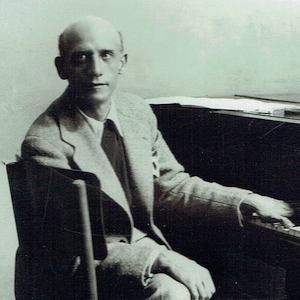
Yet the greatest find of this trio of works is a bracing Concerto Grosso by Dimitri Mitropoulos — yes, the famously fearless conductor of the Minneapolis Symphony in the 1940s and music director of the New York Philharmonic through most of the 1950s. Except for those who diligently read the fine print of encyclopedias, few people know that Mitropoulos was also a composer — or at least he was until the 1930s, when he decided to phase it out.
The Concerto Grosso is neoclassical in sound, with much use of acidic polytonality, and it is a good match for Honegger’s style in the context of this program. The fourth movement in particular is a fantastic, turbulent, dissonant fugue; the coda sounds like a daffy Second Viennese School parody of a Baroque concerto. Botstein and The Orchestra Now work their way patiently through the piece without any special flair, but with enough vitality to put it across. Very little of Mitropoulos’s music exists on recordings — the maestro never promoted or conducted it himself — and maybe there are some other gems lurking somewhere.



